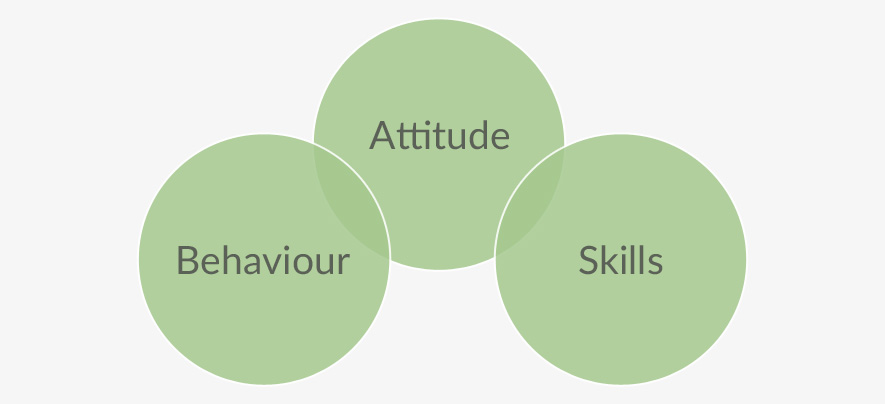
Problem At Work? Call For A Training Needs Analysis

การเรียนรู้และการพัฒนา
445 week ago — ใช้เวลาอ่าน 7 นาที
There’s a lot of talk these days about training programmes for employees. Sometimes you may think that this is a new-fangled management notion that is about spending money for very little return. However, in this age of quickly changing technology and rapidly fluctuating consumer needs, it would be wise to consider a training programme if:
- A new product has been introduced
- A new process is introduced
- New equipment has been introduced into the organisation (a laser cutting machine in a fabrication unit, for instance)
- There are workplace conflicts
- The team now needs to refine certain skills, such as presentation skills
- Managers need to understand how to handle workplace conflict etc.
As we had said in the introductory article, Do You And Your Employees Need Learning & Development Programmes?, the need for training is usually triggered. The real reason for the need for training is invariably due to a gap between:
- Attitude
- Skills
- Behaviour
The gap could lie within these three, or between the organisation’s expectation from people on these three fronts and the reality, which could be:
- Right attitude but inadequate skills
- Right skills but conflicting behaviour
- Right behaviour but attitude not in sync
However, the gaps we displayed above are simplistic. In reality, the gap might be very specific and a wrong diagnosis may lead to:
- Wasted effort – Both the participants (read employees) and the organisation/trainer will feel that efforts were wasted and could have been channelised better.
- Wasted resources – A training intervention uses resources by way of infrastructure, time (the opportunity cost) and money.
- Low morale – Employees are likely to feel they are being evaluated incorrectly as they do not lack the skills etc. on the things that they are being trained for. As a result, subsequent training programmes may not be received well.
This means a formal Training Needs Analysis or Training Needs Assessment (TNA) is required. This is an analysis that helps identify training needs by finding gaps between the desired knowledge, skills and attitude of people, and the actual knowledge, skills and attitude that they possess.
Training Needs Analysis can be conducted on a proactive basis or in reactive mode. The proactive approach makes eminent sense as it can help prevent dissatisfaction among employees and even clients.
The Training Needs Analysis aims to address the following:
Why Do We Need This Training? – This is the problem definition stage and the study addresses the problem or issue at hand. It starts form the specific and goes down into the minutiae.
What Specific Skills Do We Need To Equip Them With? – Having answered the first question of why we need the training, the TNA now addresses the specific skills and changes that are desired amongst the participants.
Who Needs The Training? – The TNA now goes into defining the audience. This is an important section as it not only identifies the audience but also states the specifics in terms of what they possess and what they lack/need to improve.
When Should The Training Be Conducted? – This is less to do with the dates but with the timing of the programme. Is it something that is both compelling and urgent? Is it something that can be addressed on a weekend or during a lull period? If it is part of contingency planning, should it be carried out based on a trigger event? For instance, some new business likely to come up could trigger the need for a specific kind of training. In such cases, the trigger event could be the client signing an MOU.
Where Should The Training Be Conducted? – Irrelevant as it may seem, this is often an important consideration. The venue is either a result of and/or reflection of:
- A sense of urgency
- A sense of seriousness
- A perk or an incentive
- The organisation’s current or shifting priorities
The options before the organisation are many:
- In premises / onsite – Onsite trainings have the advantage of low cost and quicker implementation and availability of certain resources like data etc. . However, these advantages are offset by certain limitations including the fact that there are likely to be many distractions so that participants are not completely involved, and participants often being conscious/careful. Intense feedback sessions for instance are best conducted offsite as employees feel diffident opening up at their workplace.
- Offsite– This has many advantages in terms of a change of venue, a fresher perspective, and fewer administrative headaches.It also allows people to get into the right mood. This mode lends itself well to soft skills, brainstorming sessions, feedback sessions and other interventions that require activities or a change of environment.
- Online – This is ideal in situations where people are geographically dispersed and/or getting many people together is difficult. It also saves cost and time. Specific hard skills that are more instructor-led, such as operating procedures, may lend themselves well to this mode. Very short capsules also lend themselves well to this mode. However, this methodlacks the element of group interaction, and group dynamics.
One would also look at the duration of the intervention and whether it has to be spread over a prolonged period in small bursts or be a continuous and intensive effort over a day or two.
The person carrying out the Trainings Needs Analysis needs to focus on the problem definition and not the solution. While paucity of funds or resources often leads to the TNA and the Instructional Design being done by the same resources, it is best to separate the two. The Instructional Design/Content Team is the resource group that is best equipped to suggest a solution based on the problem definition done by the TNA team. Very often, performance appraisal reports can be used as a good basis or starting point for the TNA.
A good TNA is often the result of 360 degree feedback – between the superiors, intended participants, other stakeholders (client, other departments & vendors etc.) and direct reports. This depends entirely on the nature of the problem. Films, interviews, voxpops (Voice of the People/Population) and social media conversations can be good sources of information for the Training Needs Analysis. The TNA has an extremely important role to play – because it is diagnostic in nature and can lead to the right inputs and right results.
โพสต์โดย
GlobalLinker StaffWe are a team of experienced industry professionals committed to sharing our knowledge and skills with small & medium enterprises.
ดูโปรไฟล์ของ GlobalLinker
บทความอื่น ๆ ที่เขียนโดย GlobalLinker Staff
Managing Your Energy (not time) is the Key to Productivity
8 ชั่วโมงที่ผ่านมา
5 Must-Have Emails for Your Online Store
33 week ago
Most read this week
Trending













Comments
Please login หรือ สมัครสมาชิก to join the discussion